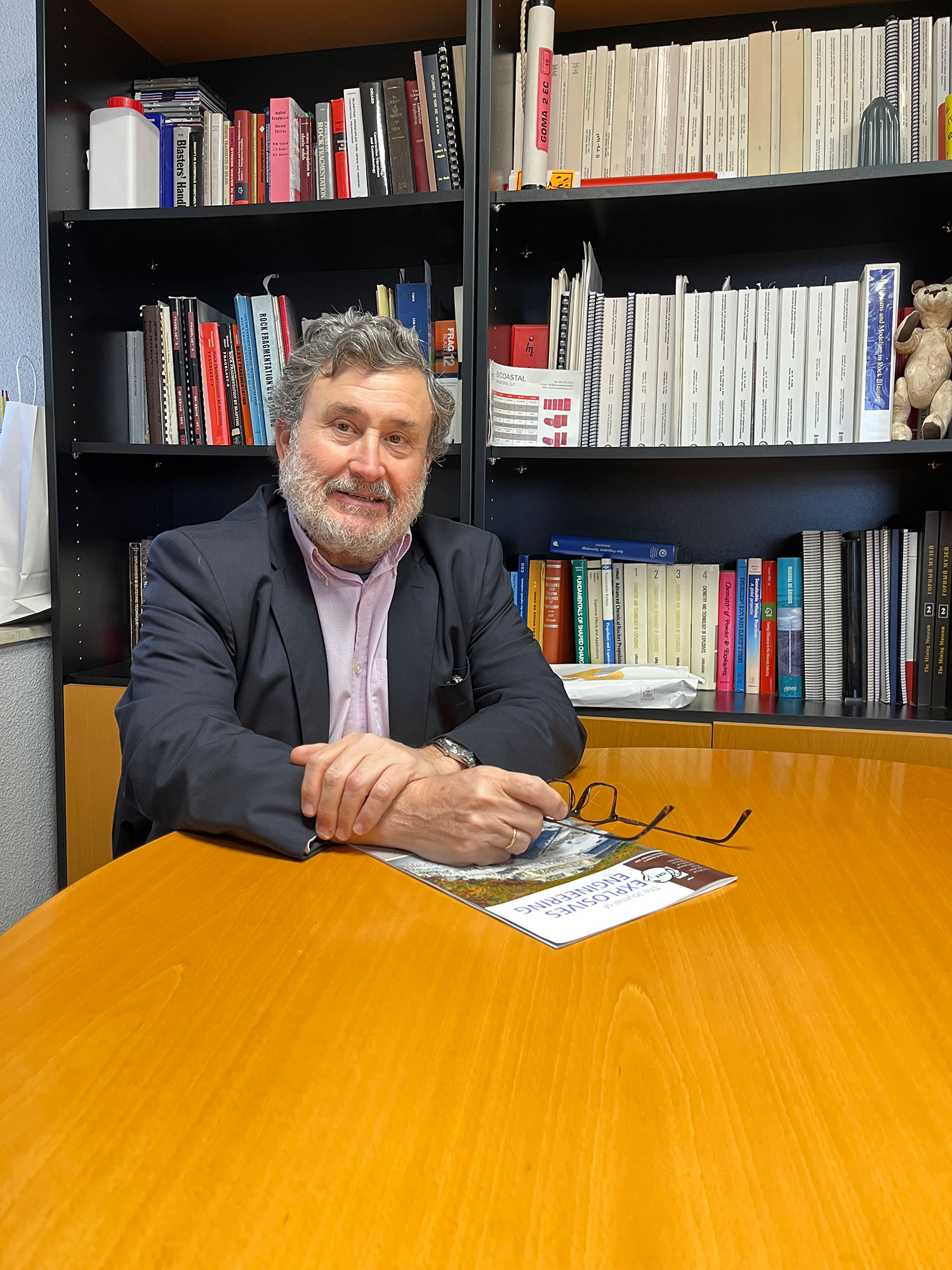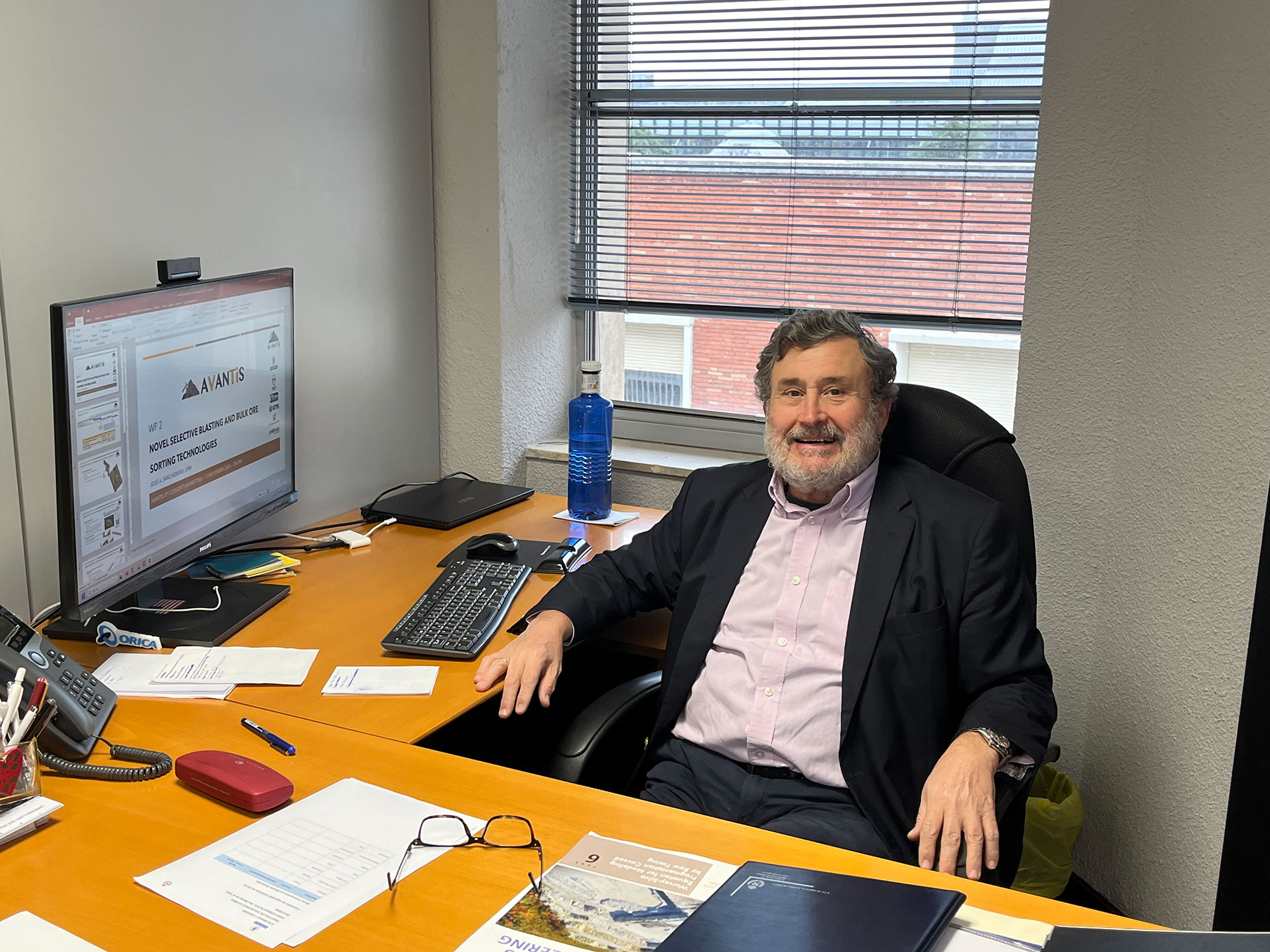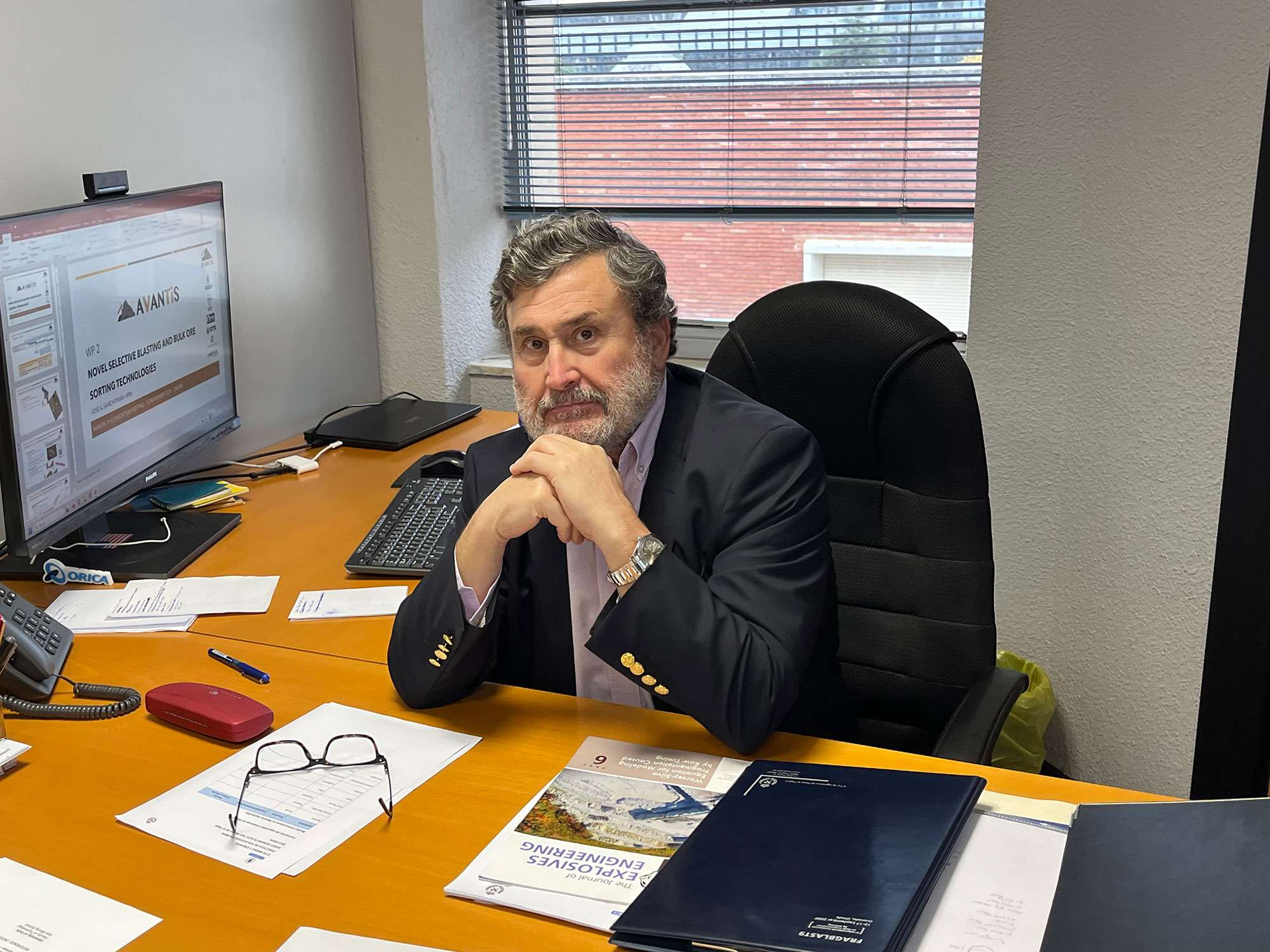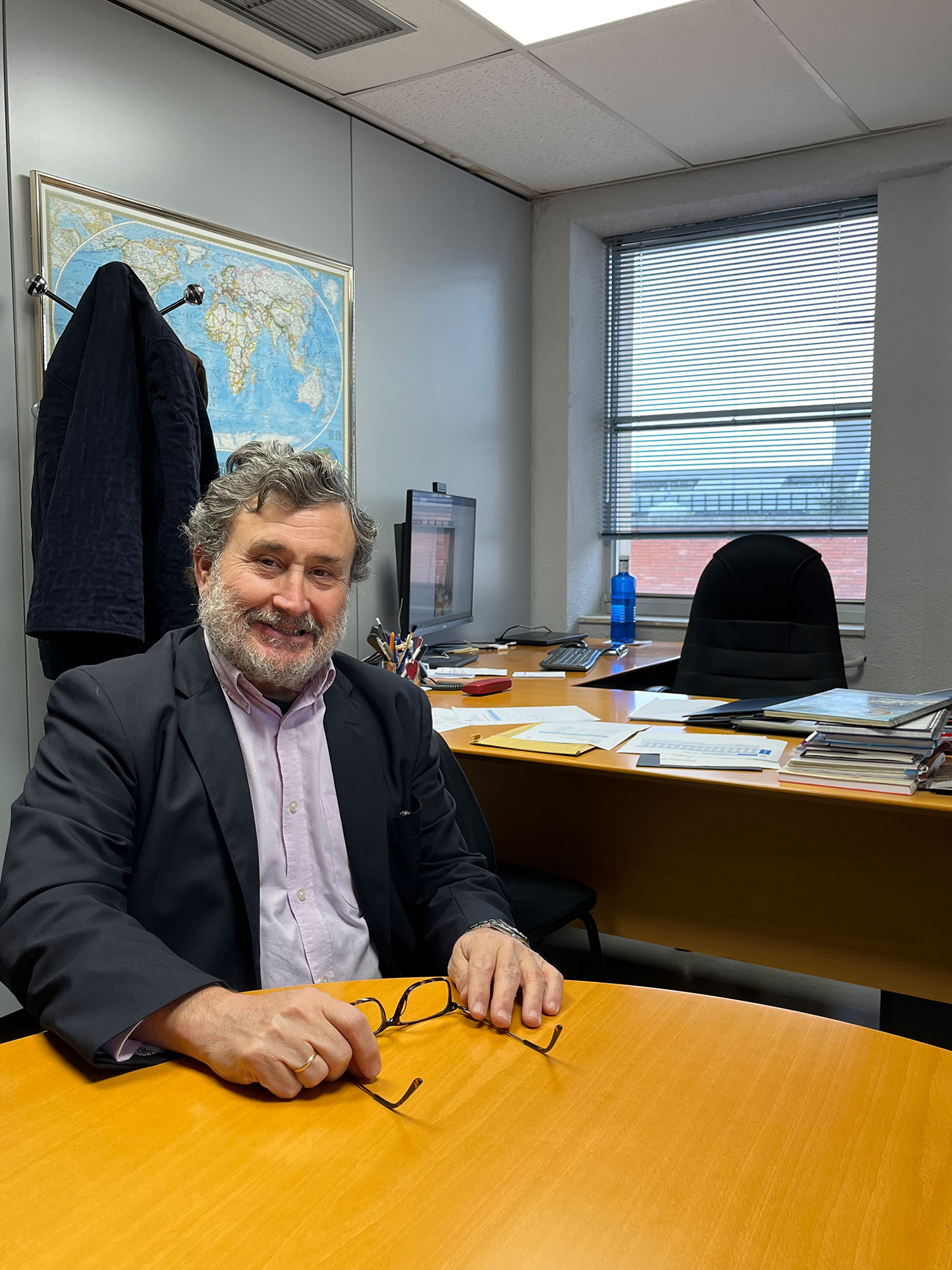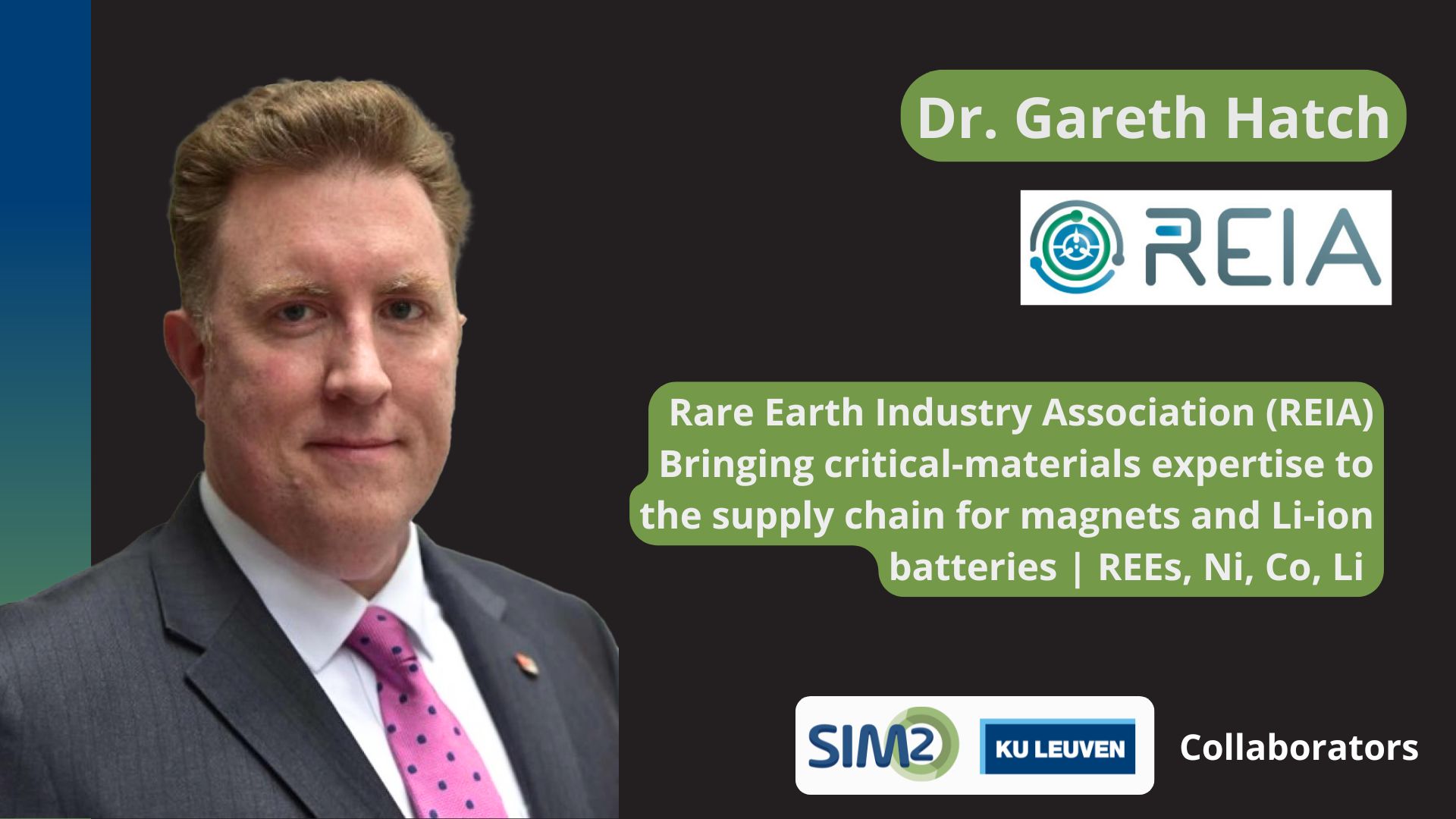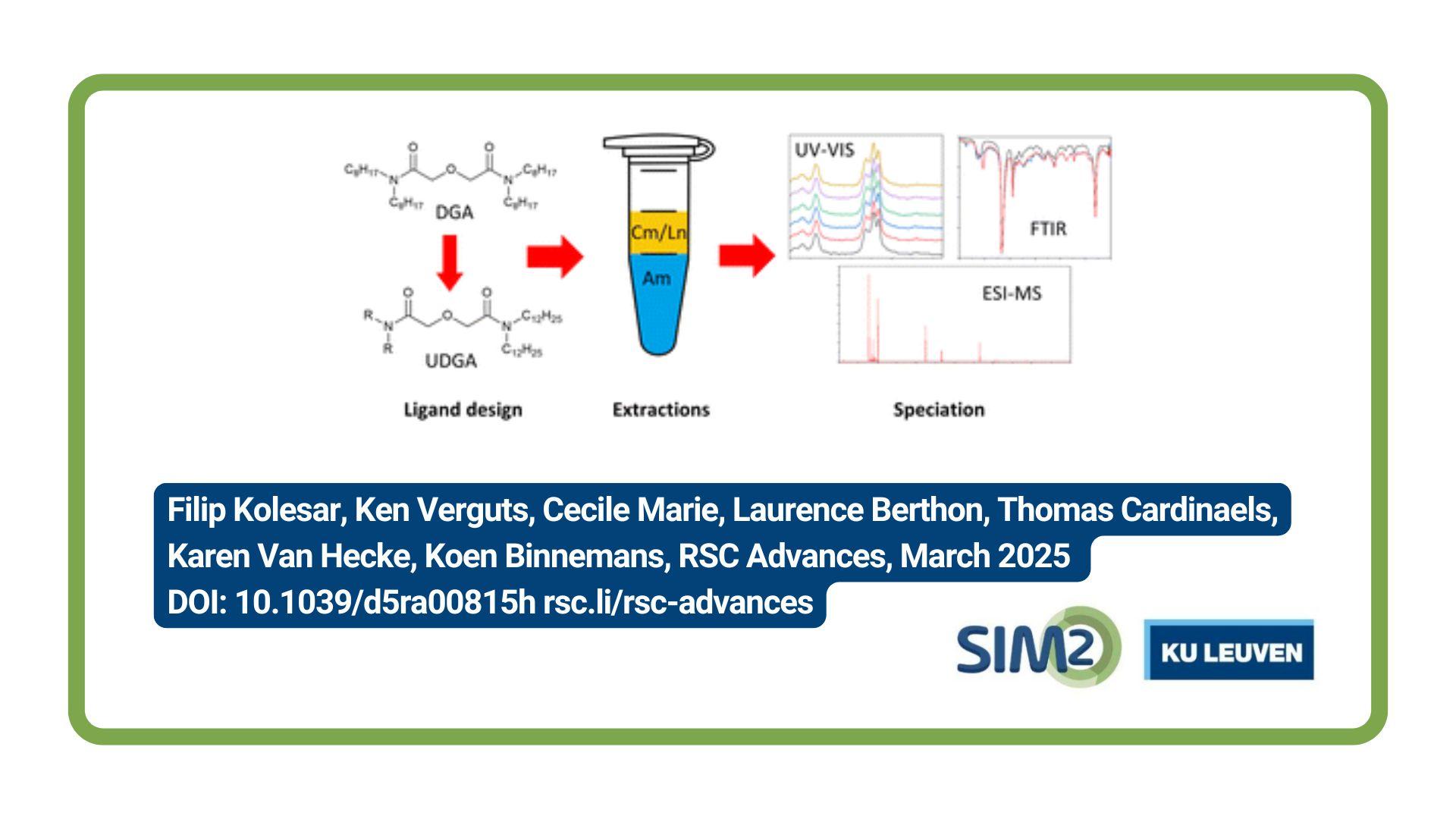A Q&A with SIM² collaborators: Jose Sanchidrián (Universidad Politécnica de Madrid)
1. Prof. Sanchidrián, thank you for agreeing to this interview. You are a professor in the Department of Mining Engineering and Earth Sciences at the Universidad Politécnica de Madrid and a member of the AVANTIS EU project consortium. Can you tell us something about AVANTIS and your role in the project?
AVANTIS is a European effort to develop technology to allow the beneficiation of vanadiferous titanomagnetites. Such process begins with the separation of ilmenite (Titanium mineral) grains from the magnetite. Mineral processing requires comminution (crushing and grinding) of the ore rock at the mineral liberation size so that particles from different mineralogical content, hence difference physical and chemical properties, can be sorted by different processes.
In mining, the first comminution is done in the excavation phase that is nearly in all cases (except soft ores) made by blasting. This offers a possibility to link the mine and the plant so that blasting is carried out in a way that the processing is optimum in ore/waste separation and final concentrate yield.
We should also bear in mind that rock comminution is an extremely energy-intensive operation – comminution in mining accounts for (you may hardly believe it!) some 4% of all the electrical energy consumed in the world, and up to half the total energy spent in mining. The energy share of the different stages of comminution in a typical mine can be some 3 to 5% in blasting, 5 to 7% for crushing, and 80 – 90 % for grinding. It is apparent that any action on low-energy-consuming drilling and blasting may lead to a multiplicative saving of energy in the global process.
2. What about your own background? How did you come to be a professor of mining and a “humble blaster”?
Hahaha. Yes, I like considering myself a blaster. The blaster-in-charge of a blast has a lot of moral qualities that are so important in life. Drill and blast work is often done in harsh conditions and with a lot of pressure coming from the production schedule of the mine or the construction contract. Very often unexpected restrictions arise as the work is carried out in a natural environment where rock (and weather!) is never uniform, yet the blaster has to be swift in deciding the best way forward in each case, stay cold-minded and lead his or her crew towards a safe path.
At the end of the job, when he or she fires the blast, the perspective of tens of thousands of tons of rock coming to life, breaking and moving in the air into a controlled position as it had been foreseen and designed for, always has some overwhelming nature.
I am a mining engineer and worked for ten years in the explosives industry where I got a relatively broad knowledge of how explosives are made, how they behave and how they can be used. I had got my PhD while working in the R&D department of MAXAM (at that time Unión Española de Explosivos) and at a certain point I had the opportunity to lecture at Universidad Politécnica de Madrid’s School of Mines. Over the years I engaged more and more with university until I finally joined it full time.
3. I expect many people don’t realise that there is so much involved in selectively extracting materials. Could you tell us something about the science of selective blasting?
Blasting excavates the rock in such a way that it can be economically loaded and hauled to the processing plant. But blasting can also be considered the first step in the comminution process. And blasting depends on several variables of the explosive and properties of the rock. Our work in AVANTIS is to experimentally define what is the best combination of blast design variables that provides a better processing of the ore and – importantly – a more efficient use of the energy. We have an experimental approach on this: we will be carrying out small scale blasts (in the range of one-and-a-half-meter bench height) with variation of some critical design variables, assess fragmentation and test the differently blasted material in a laboratory processing plant in order to learn what is the optimum blast design for ore recovery and process efficiency.
4. When you are faced with a new project that involves the need to blast for particular minerals, can you tell us something about the steps that you need to take to ensure that you extract the materials you want?
Mineral extraction is something that usually requires complex mineral processing technologies. We can design blasting to prevent ore dilution with waste in the muckpile, when the case is that the block to be blasted comprises ore and waste zones. Dilution prevention is key to a good operation so that ore is clearly flagged and so is waste, and the latter does not go to the crusher and processing plant but to the waste dump. However, I would be nonsense if I say that blasting can extract by itself the desired minerals, unless a very specific mineral layout exists.
Things are usually not like that, and is not the case in our AVANTIS project test site. But blasting, as the first ‘unit operation’ in mining, can condition the ore differently for its processing in the plant. Close cooperation and continuous feedback on the plant operation to the blasting team is key for a good overall operation. The concept is called ‘mine to mill’ and is more and more adopted by intelligent mining.
5. I am sure you are aware of Rio Tinto’s plans for a lithium mine in Serbia. The Serbian government revoked licences for the Jadar project in January 2022 after large environmental protests. It is clear that extracting minerals in Europe faces many difficulties. What are your thoughts about these challenges?
Except for a minority, European citizens do not understand the importance of mining. The situation is very complex. On the one side, there is the need for raw materials not only for economical independence but also for wealth, jobs and all benefits that industry brings. On the other side, people worry that a mine will pollute their environment, despite any claims of environmental and social awareness from mine operators. Mining is more and more aware than implementing best available technologies and setting high standards on environmental impact is key to its development and to getting the social license to operate.
An important actor here is government, law-developing and law-enforcing. I believe a lot of opposition to mining comes from distrust of population to administration. The feeling that if something goes wrong and e.g. a spillage of tailings happens, or the water table is disrupted, etc., there may not be a transparent information on the case and the actions taken for remediation, is against the opening of a mine. Building trust in the population by bringing transparency and removing corruption is very important.
Independently of the above, there are rogue environmentalist groups that oppose mining (and many other industrial activities) that do not use a rationale for their opposition, to which is not possible to fight with science, technology and reasoning. That citizens (and politicians) are able to make a difference between a sound and responsible opposition, that can be argued in technical terms, and such ‘irrational’ opposition, is – I believe – a matter of education. Current waves of populism and political extremism often don’t help settle the question into a reasonable discussion.
6. How do you see the future of minerals extraction, particularly in the European context? Are we at risk of becoming just as dependent on other parts of the world for our materials as we are for our oil?
Minerals have always been in the root of industrial revolution and human development. The immense amount of raw materials supply that has fed the growth of humanity in the last 150 years has only been available through a huge mining development. In the last part of the XIXth century and most of the XXth century, this has applied to some hundreds of millions of human beings that increased their levels of welfare several orders of magnitude. Now this demand for development and better way of life applies (rightfully!) to several billions of men and women eagerly willing to live better. Circular economy is great and we must promote it in all sectors of society and industry. However, there is no means of making all materials needed available other than mining. If someone believes otherwise, he or she is bluntly wrong.
I like to believe that European ‘intelligence’ is aware of the above. But we all have seen that the European approach, by the same ‘intelligence’, has been to get the raw materials needed from the market, much like with the other commodities – oil for instance. The fact that they have to be mined somewhere on Earth does not seem to bother Europeans much, provided it is ‘Not In My Back Yard’ (the NYMBY angle)
Europe becoming dependent on other parts of the world for raw materials is not a risk but a fact.
7. Assuming that we want to be more independent in terms of our materials needs and satisfy 10% of the EU’s annual needs for extraction (as required by the European Critical Raw Materials Act), how can we change people’s perception about mining and the importance of extracting the materials we need?
First, education from the primary school – let kids now more about geology and about our mother Earth, which provides all materials we humans need for our wellbeing, making it only natural that we take what we need from it. Let the textbooks discuss about what materials it takes to build a house, a car, a mobile phone, and where they must come from (the famous quote ‘no mining – no instagram’).
Secondly, educate governments and rulers – they are citizens in the end and may have not had a proper education as to the importance of mining. I believe that there are valuable efforts at European level to boost mining technologically and also socially so there may be some shift in the decision-making hubs. I hope this roots in society so that rulers
Thirdly, building trust between industry, governments and population. Best managerial practices in mining companies must be enforced just as law-enforcement must be applied with a positive angle.
8. What would your advice be to a young person interested in working in the European minerals-extraction sector?
I would congratulate him or her for choosing mining for a career. I do this in my first class to my mining engineering students. Mining is always challenging and touches upon very different sciences and technologies. You will never stop learning, as ores and orebodies are always different. Besides this, the drive of mining towards developing and implementing new technologies is nowadays very high compared to past times. Mining knows that only by doing the job with best technologies and best practices it can be well accepted by society. Young mining engineers have very well understood the environmental challenges of mine exploitation, the social implications and the current reach of technical solutions.
They know very well that no mistakes are allowed (no spillage of tailings dam, no slope failure, no air pollution…) and that responsible mining and empathy with neighbors are the only way forward. New mining engineers have been raised in an environmental care and safety-first climate. They are the best calling card of mining. This has to show and will necessarily improve the perception of mining for society.
SIM² KU Leuven is the KU Leuven Institute for Sustainable Metals and Minerals (SIM² in short). SIM² is one of the official KU Leuven Institutes that were endorsed by the KU Leuven Academic Council. SIM² has more than 370 members, coming from a wide range of (interdisciplinary) research groups and departments at KU Leuven. SIM²’s missions is “to develop, organise & implement problem-driven, science-deep research & future-oriented education, contributing to the environmentally friendly production & recycling of metals, minerals & engineered materials, supporting (…) a climate-friendly, circular-economy”.
• Read more in this featured article in Geniaal.
• Follow SIM² on LinkedIn
• Interviews with other SIM² colleagues and collaborators



